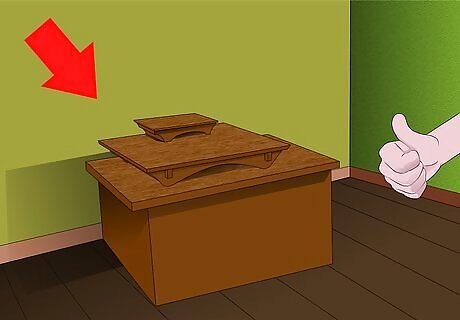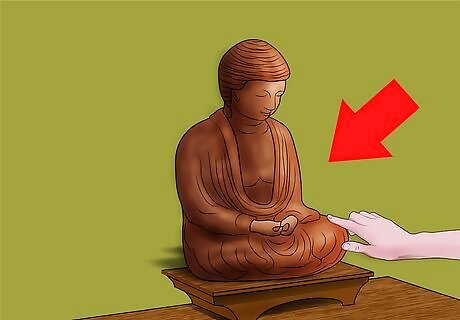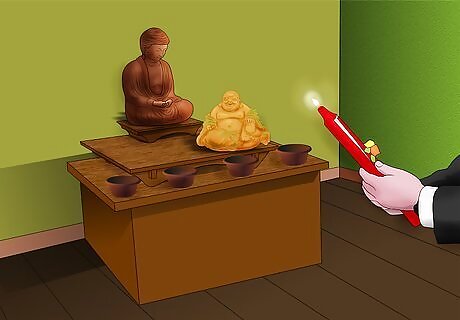
views

Choose a stable place to set the shrine. (Some people use a whole room.) It may be a table or a shelf, but be sure to have it at least above head level based on the usual use of the room.

Make a stand or shelf to support the objects. A simple start is a wooden stand with three levels. This will be the main surface of the shrine, so you may want to put some effort into this.

Place the objects onto the shrine. First you will need an image of the Buddha. You can have as many as you like. This will go on the topmost level of the shrine. It is considered 'bad etiquette' to place the Buddha (or Buddhas) lower than any other image in the same room. In the place of an image of Buddha, a mantra written on a piece of paper or similar is perfectly acceptable, and preferred in the Jōdo Shinshū (Pure Land) tradition of Buddhism and in Nichiren Buddhism. Some buddhist schools recommend certain standardized arrangements of images for their lay members, in Japan often as triptychs with the main Buddha surrounded by either bodhisattvas, dharma guardians or lineage masters. This is not necessary, even after Japanese standards, and Chinese-Taiwanese Buddhism is usually less standardized when it comes to home shrines.

If a suitable Buddha image simply cannot be obtained, a picture of Buddha's relics, a stūpa , a Buddhist holy book, a bodhi leaf or picture of the Buddha's footprints may be acceptable.

On the next level, you may place an image of a Buddhist teacher like the Dalai Lama or a small statue of the Chinese Bùdài (the Laughing Buddha, considered to be a manifestation of Buddha Maitreya.) Two guardian images may be an idea to consider: Either the 'lion-dogs' common at the entrance of South Asian monasteries or two dharmapalas/vidyarajas you feel familiar with (Chinese, Japanese and Tibetan Buddhists doesn't use exactly the same palas, and for persons into Tibetan Buddhism or Shingon there may be reasons to choose carefully).

Place offerings on the lowest level or, if you wish, a Buddhist scripture or a bowl of water. Some find a bell or singing bowl on a cushion useful.

Traditional offerings include candles, flowers, incense, fruit or food. However, it is not what you offer that is important: it is that it is done sincerely with a pure heart. Since Buddhist monastics aren't allowed to eat after lunchtime, food, fruit and dairy offerings traditionally – and for symbolic reasons – occur in the morning or shortly before lunchtime. Offerings of water, non-dairy beverages, candles, flowers and incense may, however, occur at other times of the day.

Place a small stūpa on the supporting surface of the shrine, if you wish. You can make a simple stūpa with a small pile of stones. There is no need to go out and buy a costly gold one; that defeats the purpose of Buddhism.

It is traditional to change the offering water every morning, however, the old water should never go to waste. Use it to water a plant or something. A new cup or bowl should be used for this purpose: glass or crystal is preferable, because the clarity of the water represents clarity of the mind. Some Buddhist schools use two water bowls: 'drinking' water and 'washing' water. It is far from wrong to let flowers remain even after withering has begun: The flowers serve to remind you of impermanence.

If you wish, you may offer incense at the shrine when you recite morning ceremony. Touch the tip to your forehead, then light it. See warning.




















Comments
0 comment